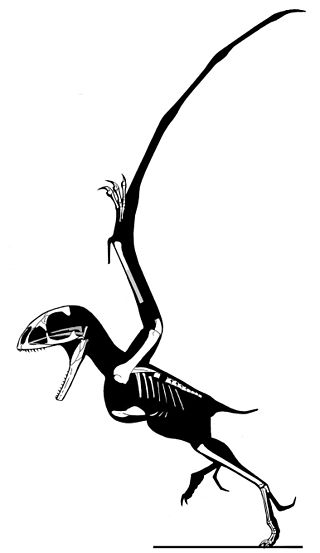Top Qs
Timeline
Chat
Perspective
Batrachognathus
Genus of anurognathid pterosaur From Wikipedia, the free encyclopedia
Remove ads
Batrachognathus is an extinct genus of anurognathid pterosaur from the Late Jurassic (Oxfordian to Kimmeridgian) Karabastau Formation of the central Asian republic of Kazakhstan. The genus was named in 1948 by the Russian paleontologist Anatoly Nicolaevich Ryabinin. The type species is Batrachognathus volans. The genus name is derived from Greek batrakhos, "frog" and gnathos, "jaw", in reference to the short wide head. The specific epithet means "flying" in Latin.
Remove ads
Description

Batrachognathus was a small pterosaur, with a wingspan of 50–75 cm (1 ft 8 in – 2 ft 6 in) and body mass of 40 g (1.4 oz).[1][2][3] Like all anurognathids Batrachognathus is assumed to have been an insectivore, catching insects and perhaps small fish on the wing with its broad mouth.[4]
Three fossils have been found in a lacustrine sediment in the North-West Tien Shan foothills of the Karatau Mountains. In the Jurassic this area had some similarities in habitat to the Solnhofen lagoon deposits in Bavaria, Germany. The genus is based on holotype PIN 52-2, an incomplete and disarticulated skeleton consisting of skull fragments, jaws, vertebrae, ribs, legs and wing bones. The skull of 48 mm (1.9 in) long is high, short and broad. The upper jaws have in total 22 or 24 recurved conical teeth; with the lower jaws they make a short and very wide mouth. The animal is not preserved with a tail. Whether it had one is debatable; usually it is assumed a short tail was present.[4]
Remove ads
Classification
Batrachognathus was assigned to the Anurognathidae, as a relative of Anurognathus. In 2003 Alexander Kellner named the clade Asiaticognathidae to include it and the Asian Anurognathid Dendrorhynchoides. Christopher Bennett pointed out the name Asiaticognathidae was inappropriate, as the clade lacked an Asiaticognathus, and in 2009 Kellner proposed Batrachognathinae as a replacement.[5] According to an analysis in 2006 by Lü Junchang, Batrachognathus and Jeholopterus are sister taxa. In 2021, a phylogenetic analysis conducted by Xuefang Wei and colleagues recovered Batrachognathus within the subfamily Batrachognathinae, sister taxon to the genus Sinomacrops.[6] Below is a cladogram representing their phylogenetic analysis:
Remove ads
See also
References
Further reading
Wikiwand - on
Seamless Wikipedia browsing. On steroids.
Remove ads

